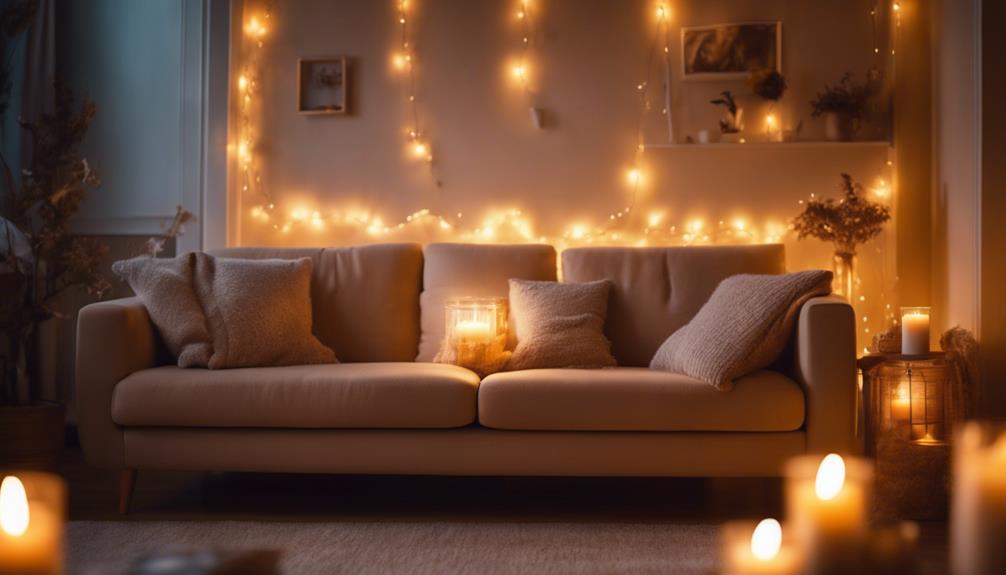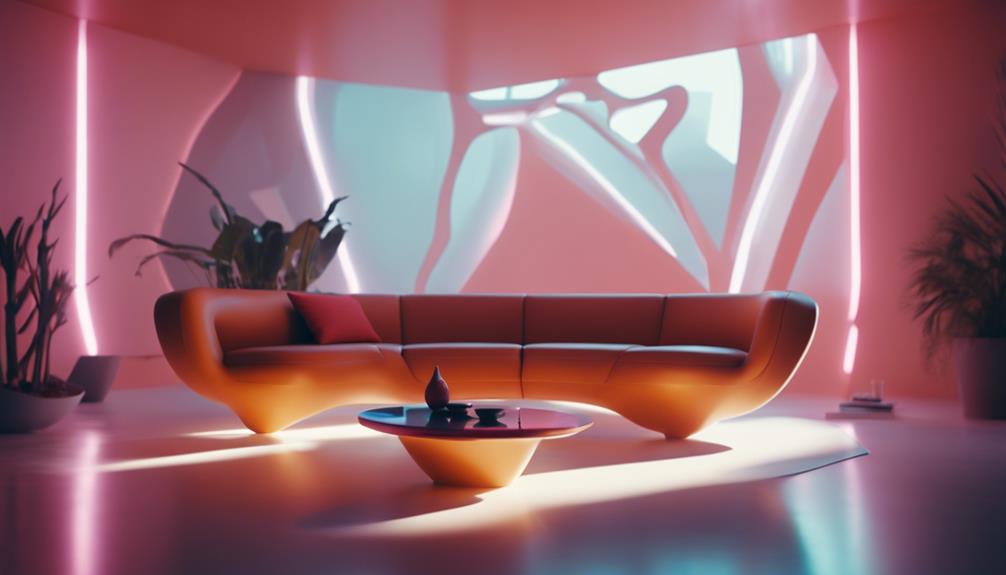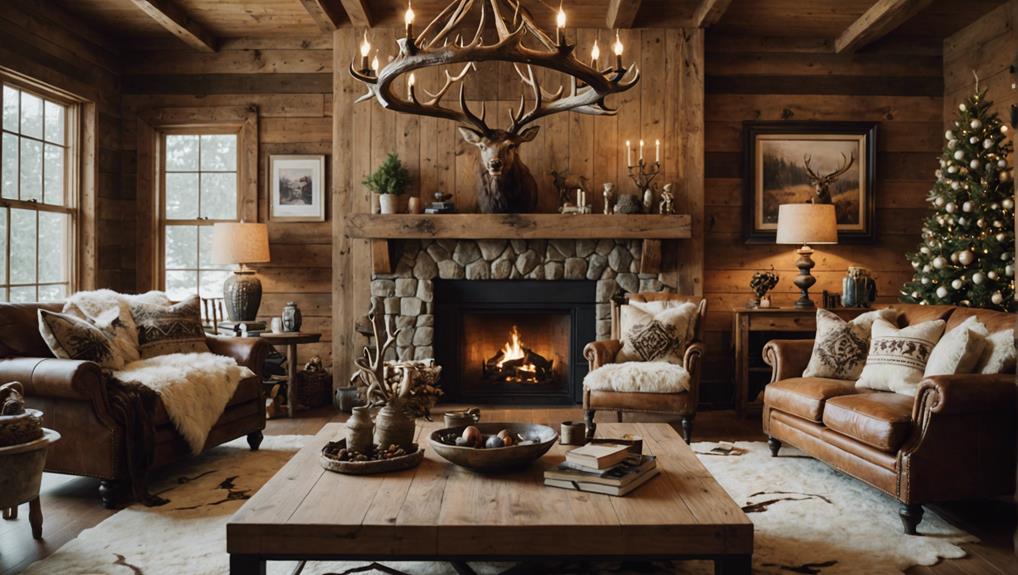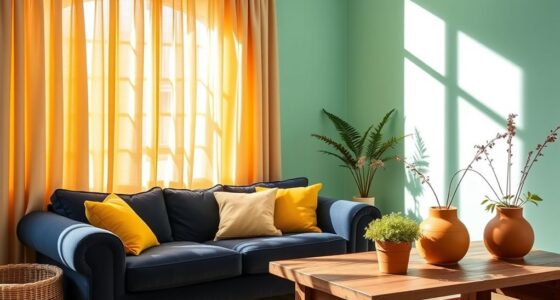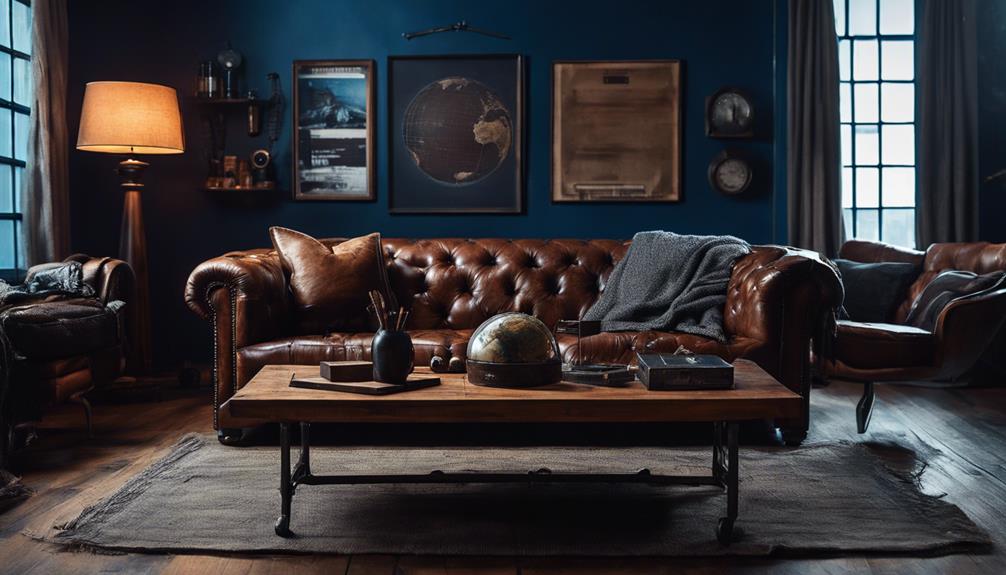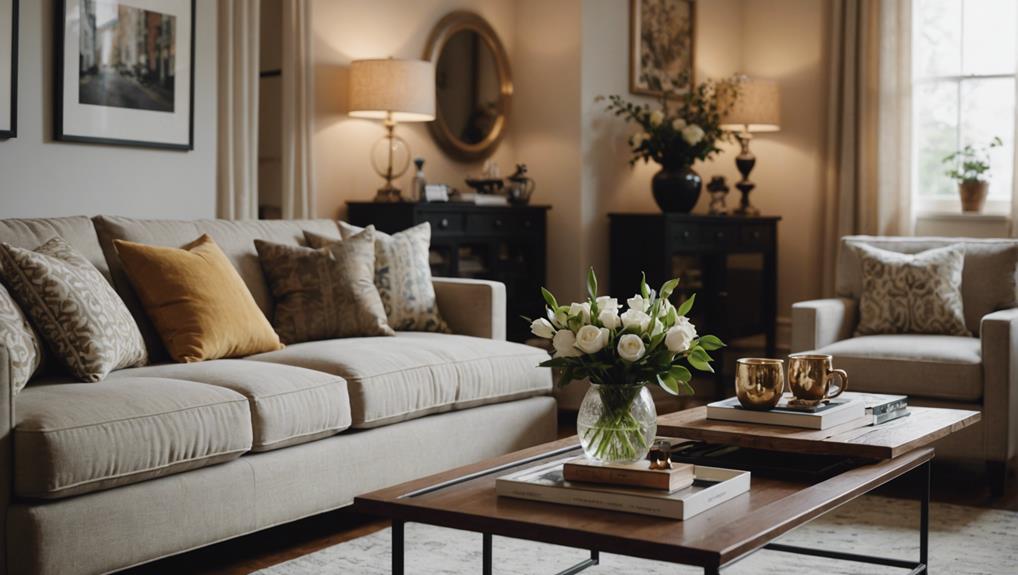To create perfect lighting that sets the mood in your home, use multiple light sources for warmth and depth. Choose warm bulbs under 3000K for a cozy vibe, and position lamps and sconces at or below eye level to soften the light. Layer ambient, task, and accent lighting to balance functionality with atmosphere. Don't forget to incorporate seasonal adjustments—warmer hues in winter and softer tones in spring. Mix fixtures that complement your décor for a cohesive look. Mastering these techniques will transform your space, making it inviting. There's so much more to discover about making your home glow!
Key Takeaways
- Layer lighting with multiple sources, including sconces and lamps, to create depth and a cozy atmosphere.
- Choose warm light bulbs under 3000K to foster a comfortable and inviting environment.
- Utilize dimmable fixtures to easily adjust brightness for different occasions and moods.
- Incorporate reflective surfaces like mirrors to amplify light and enhance warmth in the space.
Principles of Mood Lighting
How can you transform a space into a cozy retreat? Understanding the principles of mood lighting is key.
Start by utilizing multiple light sources—aim for up to a dozen throughout the room. This approach creates an ideal glow that enhances the overall ambiance. Instead of solely relying on overhead fixtures, incorporate sconces, lamps, and accent lighting at or below eye level. This method results in a softer, more inviting effect that makes your space feel warm and welcoming.
When you choose your bulbs, opt for warm light with a color temperature below 3000K. Low-wattage incandescent bulbs (25-40 watts) can effectively avoid harsh lighting, helping you cultivate a cozy atmosphere.
Layering is essential, too; combine ambient lighting with task and accent lighting. This layering not only adds depth and variety but also allows you to switch between different moods and functionalities in your space.
Choosing the Right Fixtures
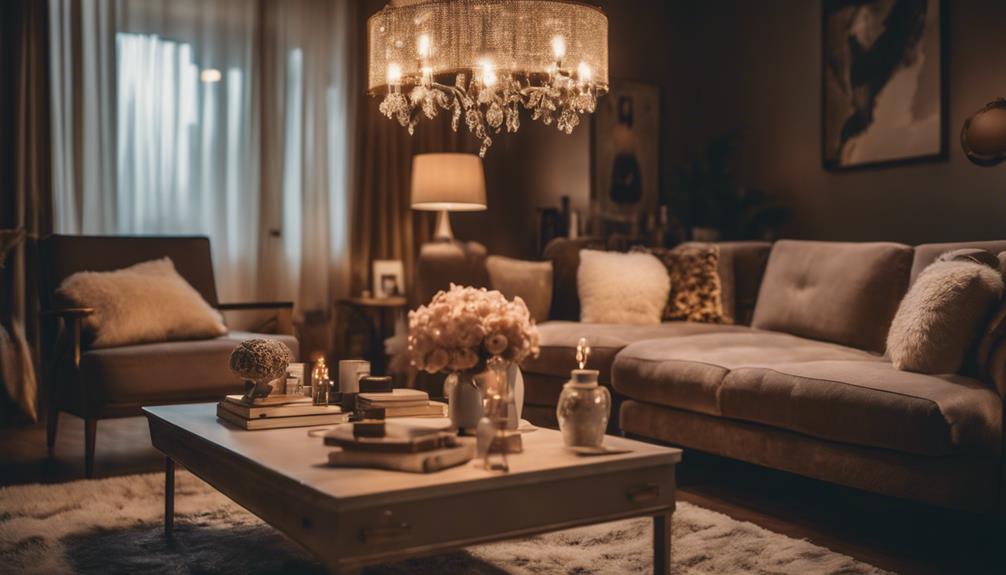
Selecting the right lighting fixtures is essential for enhancing your space's overall aesthetic and functionality. Start by considering the scale and proportion of the fixtures in relation to your room size. If a fixture's too large or too small, it can throw off the balance of the space. Aim for harmony by selecting fixtures that match your overall decor style, ensuring a cohesive look throughout your home.
Energy-efficient options, like LED fixtures, are practical choices due to their lower electricity costs and longer lifespan. They not only save money but also contribute to a sustainable lifestyle. Additionally, consider dimmable fixtures that allow you to adjust brightness levels, helping you tailor the ambiance for different occasions or times of the day.
Placement is vital, too. Strategically positioning your lighting fixtures can maximize light distribution, effectively highlighting key areas or features in your home. Remember, the right lighting fixtures can transform your environment, making it more inviting and functional while showcasing your unique style.
Creating a Cozy Atmosphere
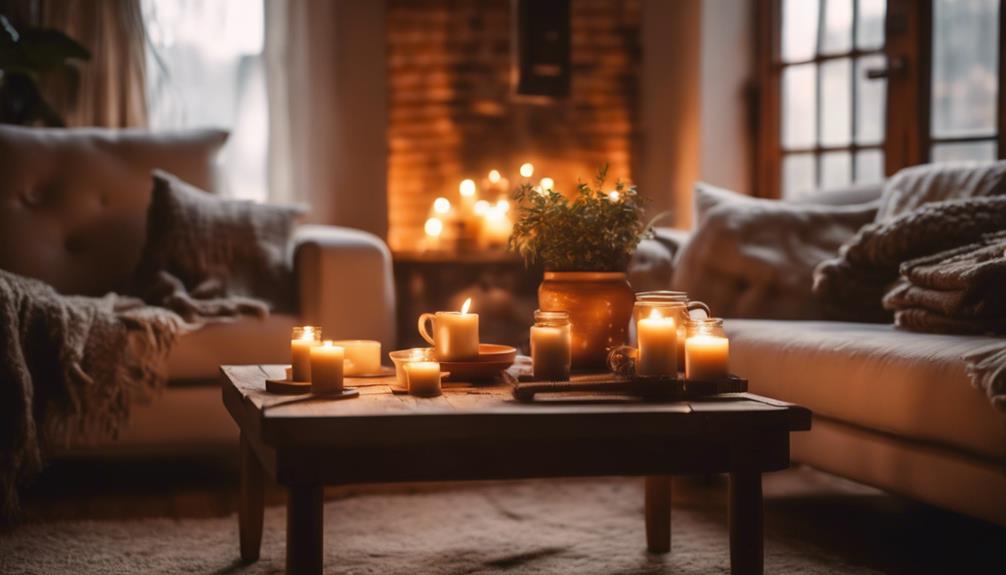
To create a cozy atmosphere, you'll want to focus on intentional light placement and the use of reflective surfaces.
Position your lights at different heights to cast a warm glow and enhance the room's depth.
Reflective Surfaces Enhance Warmth
Reflective surfaces, like mirrors and glossy finishes, can transform a room by amplifying light and creating a warm, inviting atmosphere. By strategically placing warm lights near these surfaces, you can enhance the overall glow of a space without needing extra fixtures. This approach not only brightens your room but also softens harsh shadows, making it feel cozier.
Using warm bulbs under 3000K is key to achieving that comfortable ambiance. When the light bounces off reflective surfaces, it creates a welcoming environment that's perfect for relaxation or socializing. Incorporating reflective decor, such as metallic accents or glass elements, can elevate your space's elegance while improving light distribution.
Layering your lighting with reflective surfaces adds versatility to your home's mood. You can easily adjust the feel—from bright and lively for gatherings to soft and intimate for quiet evenings.
Intentional Light Placement Matters
Strategically placing lights at or below eye level can greatly enhance the cozy atmosphere of your space, making it feel more inviting and warm.
Using sconces and table lamps instead of overhead lighting helps create a soft, welcoming glow that encourages relaxation. Layering different lighting sources, like ambient, task lighting, and accent lights, adds depth and character to your cozy space. Each type of lighting serves a unique purpose, ensuring that every corner is well-lit without overwhelming the room.
When selecting bulbs, aim for warm tones under 3000K to foster that inviting vibe. These warm hues make your home feel comfortable and snug. You can also experiment with light placements to draw attention to your favorite artwork or architectural features while eliminating those pesky dark corners.
Don't hesitate to mix and match light fixtures to find what resonates with your style. This intentional approach not only personalizes your space but also enhances the overall atmosphere, creating a unique and cozy environment that reflects who you are.
With these tips, you're well on your way to achieving the perfect lighting for your home.
Seasonal Lighting Adjustments
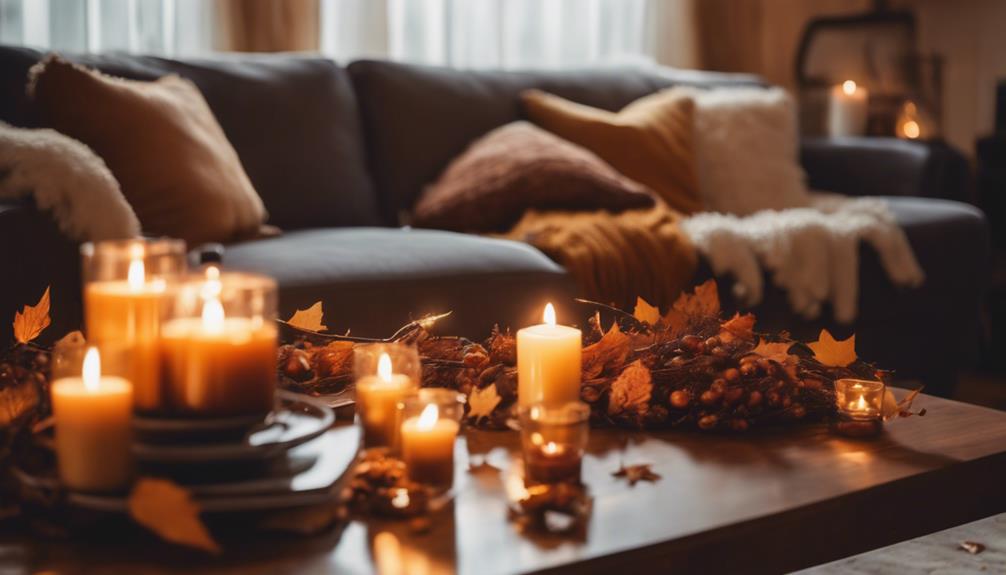
How can you transform your space with seasonal lighting adjustments to create a welcoming atmosphere throughout the year? By being intentional with your lights and lamps, you can enhance the vibe for every season. During winter, switch to warmer bulbs (sub-3000K) to create a cozy environment that combats the chill and gloom. For festive occasions, mix soft, colorful lighting like string lights or colored lamps to set a celebratory mood.
Here's a quick guide for seasonal lighting adjustments:
| Season | Lighting Type |
|---|---|
| Winter | Warm bulbs, battery-operated candles |
| Spring | Soft pastel lights, dimmable lamps |
| Summer | Bistro lights, outdoor fairy lights |
| Fall | Warm, earthy tones, decorative lamps |
Consider adding dimmable options in your living areas. This way, you can easily switch from bright lighting for gatherings to softer lighting for relaxation. Don't forget to extend your cozy indoor ambiance to outdoor spaces with inviting lights, making your home feel warm and welcoming all year round!
Community Lighting Ideas
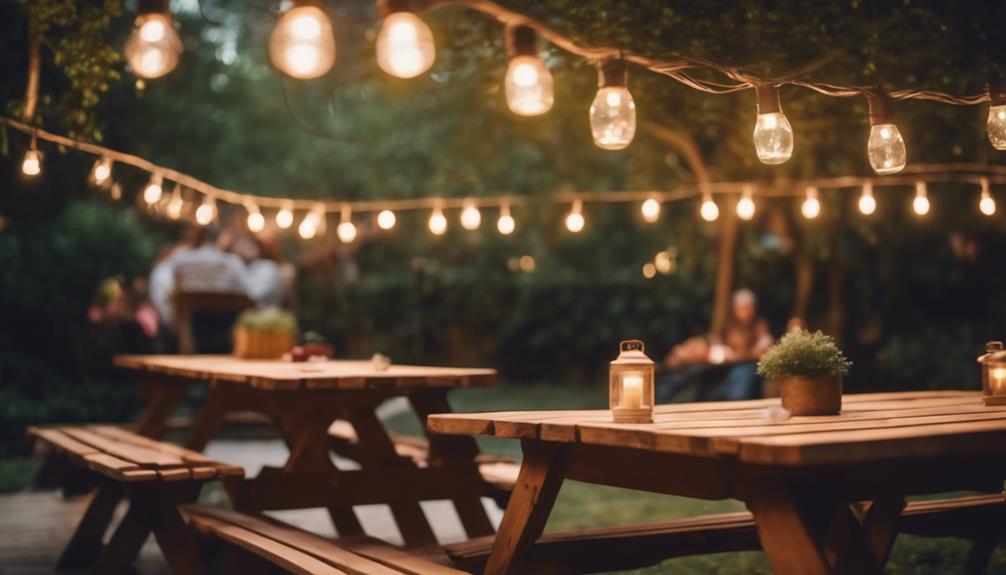
Discovering community lighting ideas can inspire you to enhance your home's atmosphere while fostering a sense of togetherness with friends and neighbors. Sharing your lighting experiences with others can spark innovative ideas, leading to cozy settings that everyone will appreciate. Consider incorporating unique elements like decorative fairy lights or battery-operated candles, which can instantly add charm and warmth to your space.
You might also experiment with various combinations of light sources to create the perfect ambiance for different occasions. For instance, if you're hosting a dinner party, think about how the lighting around your dining room table can set the mood. Soft, warm lights can make your gatherings feel more intimate, while brighter lights can energize the atmosphere.
Engaging with your community can offer invaluable feedback and fresh suggestions that you mightn't have considered on your own. Don't hesitate to ask your friends and neighbors for their favorite lighting tips. Personalized lighting choices that reflect seasonal themes or individual tastes can elevate your living space, transforming it into a warm, inviting haven for everyone to enjoy.
Importance of Lighting
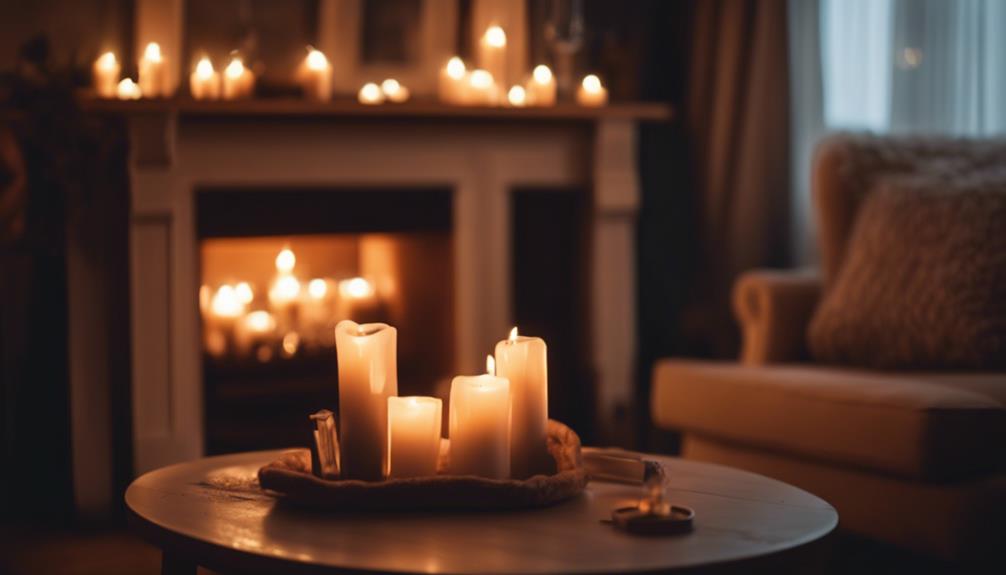
Lighting plays an essential role in shaping your mood and overall well-being.
By choosing the right color temperatures and layering light sources, you can create a space that feels both inviting and energizing.
Understanding these aspects of lighting can elevate not just your environment, but also your health and happiness.
Mood Enhancement Techniques
Proper lighting can transform your space, influencing your mood and enhancing your overall well-being. To effectively use mood enhancement techniques, focus on ambient lighting, which sets the foundation for a welcoming atmosphere.
Warm light, ranging from 2700K to 3000K, creates a cozy environment perfect for relaxation, while cooler light between 3500K and 4100K boosts focus and productivity.
Layering different lighting types—ambient, task, and accent—adds versatility to your space. This approach allows you to shift the mood from lively to serene with ease. For example, when you need to concentrate, use brighter task lighting for specific activities. Conversely, when you want to unwind, switch to softer ambient lights.
Strategic placement of light sources is key. Position multiple fixtures at or below eye level to reduce harsh shadows and glare, creating a more inviting glow.
Seasonal adjustments can also enhance your mood; consider brighter, layered lighting during the winter months to combat blues, or use colorful lights for a festive feel during gatherings. By mastering these techniques, you'll guarantee your home radiates the perfect ambiance for any occasion.
Health and Wellbeing Benefits
When you optimize your lighting, you can considerably boost your mood and overall wellbeing. The right lighting influences how you feel daily.
Warm color temperatures (2700K-3000K) create a cozy atmosphere, promoting relaxation and comfort, while cooler temperatures (3500K-4100K) can enhance your focus and activity levels.
Natural daylight plays an important role too; well-lit spaces increase serotonin production, which is essential for improving mood and overall health and wellbeing. This is particularly important during darker months, as effective lighting can help combat seasonal affective disorder (SAD) and reduce the risk of depression and anxiety.
Moreover, good lighting enhances safety in your home. By minimizing poorly lit areas, you lower the likelihood of accidents and injuries.
Don't forget about your sleep quality; using warmer, dimmable lights in your bedroom can help prepare your body for restful sleep, essential for your mental and physical health.
Understanding Color Temperature
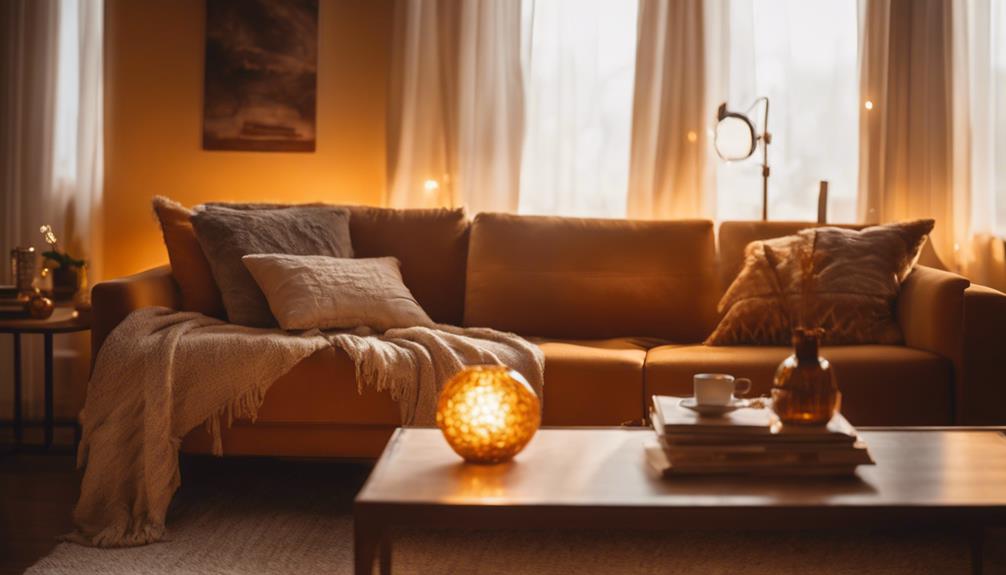
Color temperature plays an essential role in setting the mood of your space, affecting everything from relaxation to productivity. Measured in Kelvin (K), color temperature helps determine the warmth or coolness of your lighting.
For a cozy atmosphere, you'll want to use warm light, typically around 2700K to 3000K. This warm white light is perfect for living areas and bedrooms, promoting relaxation and comfort.
If you're looking to enhance focus in workspaces, consider cooler white light, which ranges from 3500K to 4100K. This helps create an environment conducive to concentration. For areas like kitchens and bathrooms, higher color temperatures, such as daylight (5000K to 6500K), improve visibility and stimulate alertness.
Maintaining a consistent color temperature throughout your home is vital to avoid visual chaos and guarantee a harmonious look. However, you can strategically vary temperatures to create focal points in your design.
Smart Lighting Solutions
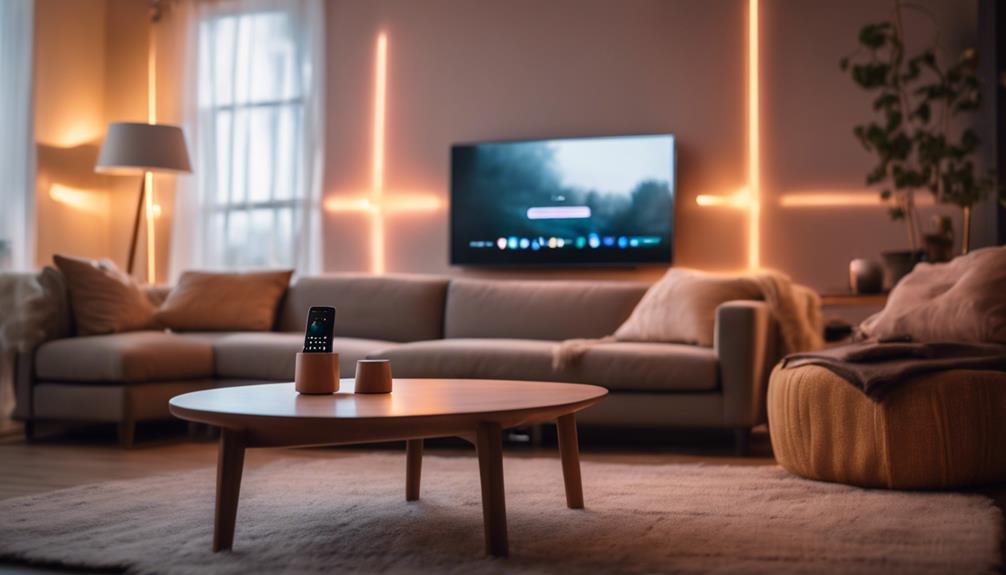
With an understanding of how color temperature influences your space, you can now explore how smart lighting solutions can elevate your home's ambiance and functionality.
Smart bulbs, like those from Philips Hue, allow you to control your lighting with your smartphone, making it easy to adjust brightness and color temperature from anywhere in your home. This level of control means you can create the perfect atmosphere for any occasion.
Many smart lighting systems offer customizable settings that mimic natural light patterns throughout the day, enhancing your wellness and productivity. You can automate your lights to align with your daily routines, which not only boosts convenience but also improves energy efficiency.
Additionally, some smart lighting solutions feature biometric sensors, adjusting brightness and color based on occupancy and time of day. This creates a responsive environment that caters to your needs.
Grouping controls for your smart bulbs simplifies managing multiple lights, letting you easily create the ideal ambiance in different areas of your home. Embracing smart lighting solutions transforms your space, making it more functional and inviting.
Indoor and Outdoor Strategies
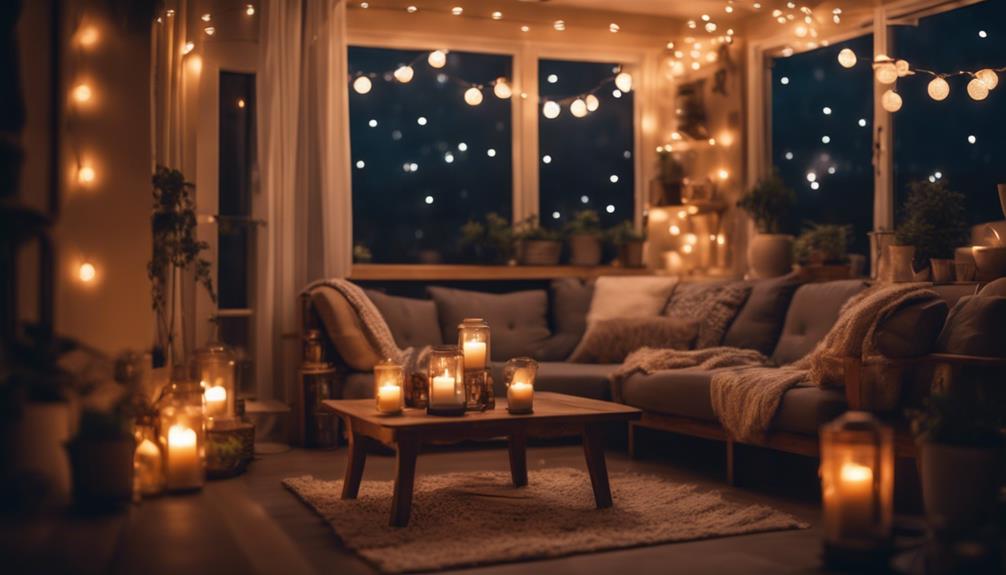
Creating a balanced lighting plan for both indoor and outdoor spaces enhances the atmosphere and functionality of your home.
Start by layering your lighting. Use ambient lighting to set the overall tone, task lighting for specific activities, and accent lighting to highlight features. For your dining table, consider a stylish pendant light that not only illuminates the space but also adds a decorative touch.
When you step outside, think about how to maintain that inviting feel. Install pathway lighting with solar-powered fixtures to guarantee safety and navigation during evening gatherings. For a cozy vibe, string bistro lights or larger fairy lights above your outdoor seating area, seamlessly connecting it to your indoor ambiance.
Don't forget about wall-mounted sconces in outdoor areas; they provide lateral lighting that adds depth and warmth without cluttering the floor space. Adjust your outdoor lighting to warmer tones below 3000K to create a relaxing atmosphere perfect for unwinding or entertaining.
Maintenance and Safety Tips
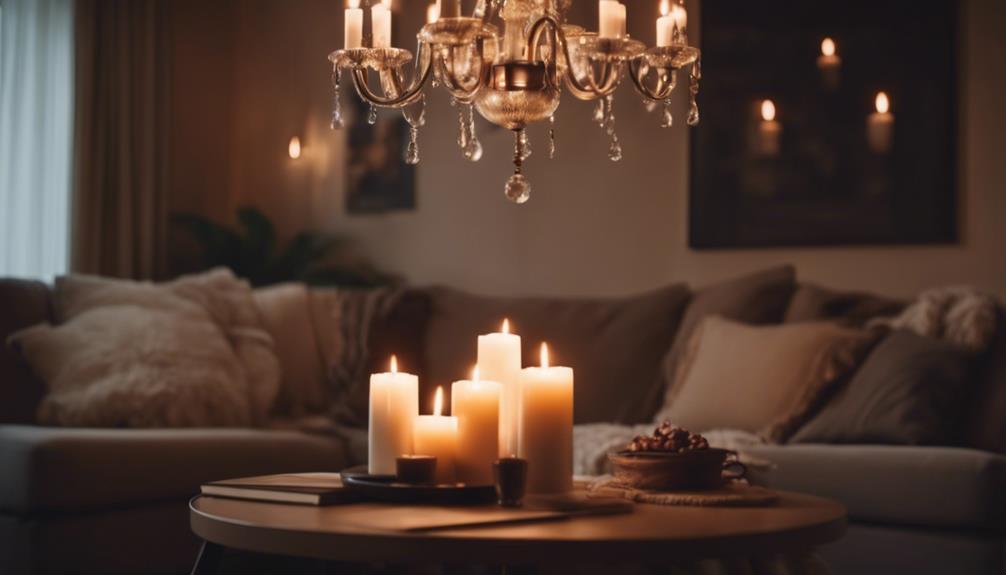
Maintaining your lighting system is just as important as your design choices, guaranteeing both safety and efficiency in your home. Regularly check and replace burnt-out bulbs to keep your space well-lit and prevent any sudden darkness. Dust and grime can diminish brightness, so clean your lighting fixtures and bulbs periodically to maintain peak illumination and energy efficiency.
Always use the appropriate wattage for your bulbs according to the fixture specifications. This practice helps avoid overheating and reduces the risk of fire hazards. Additionally, inspect all wiring and connections to verify they comply with safety standards. This step is essential in preventing electrical failures or accidents in your lighting system.
If you're considering complex lighting setups, think about hiring a professional for installation. This assures not just peak functionality but also safety, giving you peace of mind.
Frequently Asked Questions
What Lighting Is Best for Mood?
To create the best mood, you should use warm white light for coziness, layer different lighting types, adjust brightness with dimmable options, and add colored or fairy lights for a fun atmosphere during gatherings.
What Color Light Is Best for Setting the Mood?
To set the mood, warm white light creates a cozy feel, while soft blues or purples add a calming touch. Experiment with dimmable lights to adjust the ambiance based on your activities and emotions.
How Do You Set the Mood With Lighting?
To set the mood with lighting, mix ambient, task, and accent lights. Use warm bulbs for coziness, adjust brightness for activities, and add battery-operated candles or fairy lights for a charming touch. Experiment until it feels right.
How to Make Your House Glow?
To make your house glow, mix ambient, task, and accent lighting. Use warm bulbs, position lights at eye level, and layer unique fixtures. Highlight artwork and reflective surfaces to create inviting focal points throughout your space.
Conclusion
Now that you've got these perfect lighting tips, it's time to transform your home into a cozy retreat.
Remember, just like a good old-fashioned candlelit dinner, the right lighting can create an inviting atmosphere that makes everyone feel at home.
Don't forget to play around with fixtures and color temperatures to find what suits your vibe best.
So, go on and light up your life—your space deserves to glow!
